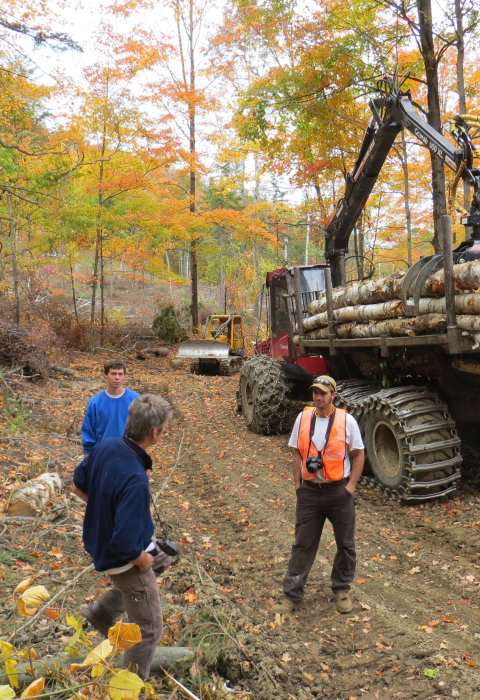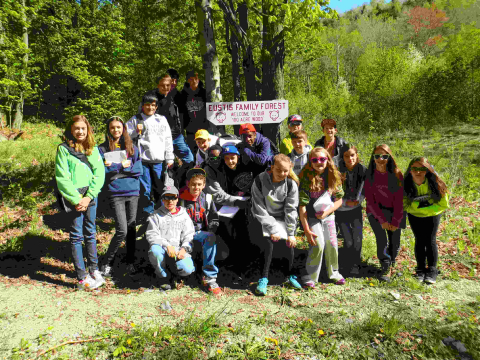Private Landowner Project
Steve Eustis is an electrical engineer with a lifelong interest in the woods and a college minor in forest science. For his family’s 340-acre woodland near Starksboro, Vermont, he says: “Our forest management goals are recreation, education for ourselves and others, and investment” in future timber value.
Timber Harvests an Important Tool
Since 2005, Eustis has used different types of timber harvests to diversify the forest, including patch cuts (in which 90 percent of the overstory trees are harvested), shelterwood cuts (50 percent harvested), small group/single cuts (35 percent harvested), and crop-tree cuts (25 percent harvested). “Our goal is always to leave the residual stand with a higher percentage of high-quality trees than before the harvest,” Eustis says.
“We hope to spark a lifelong interest in forests so that kids go on to hunt, hike, and otherwise enjoy the woods. Some may eventually become stewards of their own working forests.”
Some of the harvests bring a financial return, and they help the local economy. Eustis has sold saw logs, firewood, pulp, and birch bark. Forest activities employ foresters, loggers, and excavation contractors who help build forest trails and roads.
When Sunlight Reaches the Ground
Following timber harvests, sunlight spurs the growth of low plants that wildlife use for food and cover. “By having these different harvests in close proximity,” reports Eustis, “we created what foresters call horizontal diversity – a bunch of different forest types right next to each other. This is beneficial to wildlife and makes for a more resilient forest.”
Two half-acre areas are kept in a young growth stage near a large grass field, a willow and alder wetland, and a quarter-acre pond. “A variety of soft mast shrubs like American highbush cranberry were planted around the pond,” notes Eustis. “This area is now a wildlife hot spot.”
Eustis reports seeing songbirds, ruffed grouse, and woodcock in the managed areas.
The family has also planted oak trees, locally rare but more common farther south, to build resilience to climate change by increasing species diversity.
Sparking Interest in Stewardship
Each year, the Eustises invite a local school’s seventh-graders for an all-day field trip and lessons about forestry, wildlife, and landscape changes over time. Says Eustis, “We hope to spark a lifelong interest in forests so that kids go on to hunt, hike, and otherwise enjoy the woods. Some may eventually become stewards of their own working forests.”



